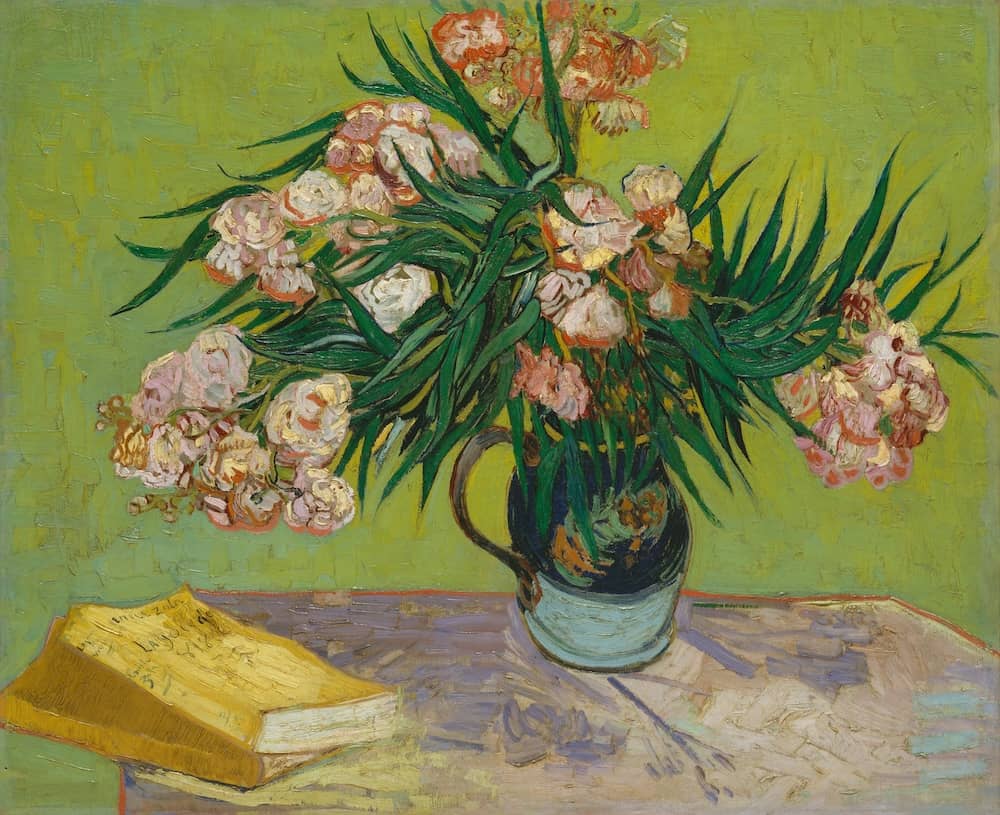Oleanders, 1888 by Vincent Van Gogh

In placing a copy of Emile Zola's La Joie de Vivre (The Joy of Living) beside the jug of blooming Oleanders, Van Gogh announces to us the sense of his love of flowers. They rise and spread across the breadth of the picture like the blossoming trees of his spring landscapes. Heavy, profuse, fertile, these fragrant flowers are painted with a virile touch in circling strokes and thick parallel dabs, in sharpest contrast to the spiky, entangled green leaves outlined in black - the carriers of another vitality.
Opposing and completing this span of reds and greens are the yellow and violet chords of the books, the table shadow, and the jug; between these pairs of complementaries mediates the yellow-green background, a strong note in harmony with both. This is not, however, a system of parceled decorative coloring: in the rich variation, interweaving, and stepping of tones, Oleanders retains the vibrancy and freedom of van Gogh's landscapes.
Pink tones in the flowers approach the color of the table, and their whites, the edge of the book. The purple handle makes a triad with the flowers and the lilac shadow. The yellow band at the neck of the jug reappears as wavy stripes in the bouquet. The green of the leaves reappears in a cooler whitened tone at the base of the jug, and in brusque strokes at the right of the table, but also in the ornament of the jug; and this turquoise note returns unexpectedly among the leaves themselves.
The strongest accents of red in the flowers are applied again with great daring along the edge of the table - a pure artistic decision, unmotivated by nature. The lilac shadow is another bold choice, justified by its place between the yellow book, the turquoise and blue-violet vase, and the yellow-green of the background. Striking to modern eyes is the drawing of the two books; odd in perspective, they form a succession of oblong and triangular strips, distinct in texture, which we find again in late cubist designs. Magnificent in audacity beside the carefully drawn leaves is the painting of the table, joyous in its abandon and in the variety of colors and brush strokes. Like most of Van Gogh's still lifes, this one possesses a high luminosity together with an astonishing firmness and tangibility of the objects.




















